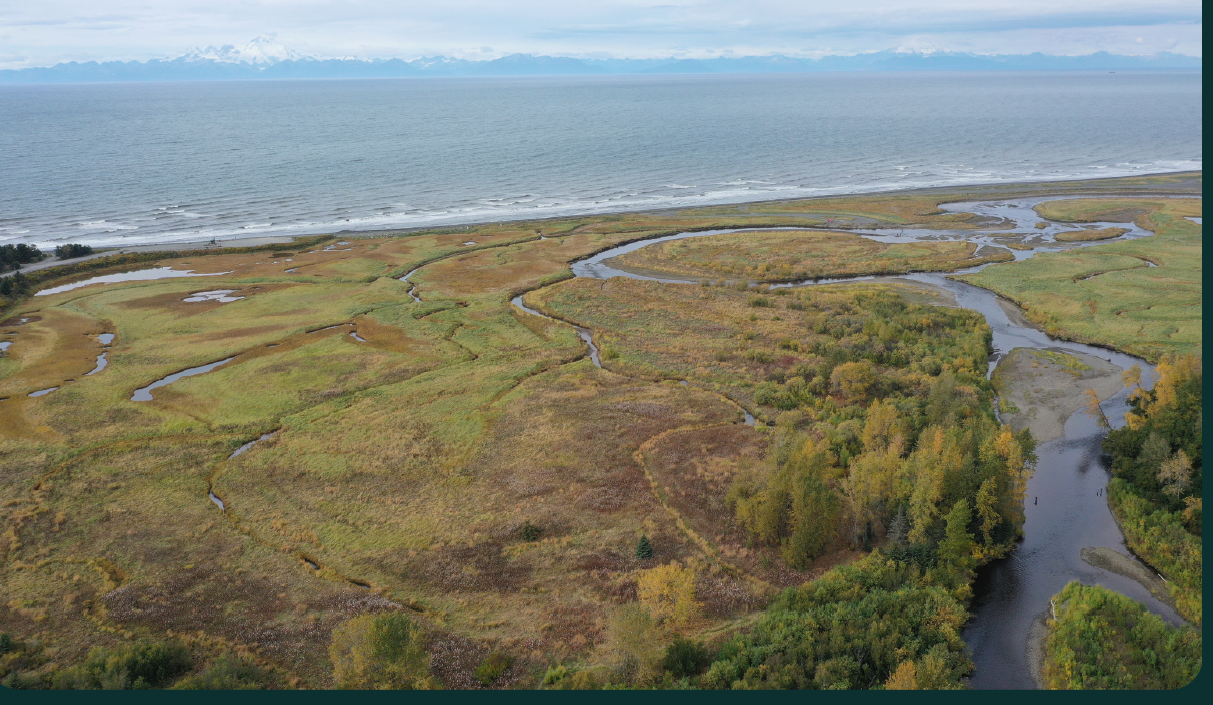This month the National Fish Habitat Partnership announces its “Waters to Watch” list for 2022. Of the ten waters listed, three are in Alaska, including the Deshka River and the Susitna River.
Many Partners have invested research into better understanding the Deshka River. Management actions to minimize the effects of warming on Deshka River salmon have been limited by a poor understanding of both their thermal requirements and the extent and distribution of thermally suitable habitats.
The U.S. Fish and Wildlife Services (USFWS), University of Alaska Anchorage (UAA), and Cook Inletkeeper have been working to close those data gaps by monitoring water temperature, streamflow and the distribution of juvenile Chinook and Coho salmon throughout the Deshka watershed; conducting long-term stream temperature monitoring, coupled with remote sensing data to identify cold-water refugia in the Deshka River system which may be critical habitat for salmon in a warming climate; and modeling to estimate how the extent and distribution of thermally suitable habitat has changed over time and how it will change in the future.
Additional partner efforts on the Deshka include the USFWS, Alaska Department of Fish & Game, and U.S. Geological Survey collecting data necessary to secure water rights on Deshka River tributaries so that as the region grows and demand for water resources increases or climate conditions change, water will be reserved to remain in the stream for the benefit of fish and aquatic life.
Cook Inletkeeper has provided real-time temperature monitoring on the Deshka River since 2013.
ADF&G operates a weir at mile 7 on the Deshka River, providing daily counts of migrating adult salmon. These data will be used to overlap timing of warm events with habitat use of salmon by life state. Among other benefits, ADF&G is collecting tissue samples to provide genetic identification of migrating fish.
The University of Alaska Fairbanks is conducting research on invasive Northern Pike in the Deshka River watershed, assessing how pike predation on juvenile salmon in the Deshka may change in response to warming water temperatures.
Given the significance of the Deshka River and the amount of resources partners have invested in research on the river, the MatSu Basin Salmon Habitat Partnership chose the Deshka River as the location for our 2022 Summer Site Tour. You can read a recap of that event in the Mat-Su Valley Frontiersman.
Susitna Spotlighted for Lamprey Significance
Pacific Lamprey is a species of conservation concern in North America and is of particular interest in Alaska because this region marks the northern extent of its range. While the Susitna River drainage, a 504-km glacial river that discharges into Cook Inlet and the Gulf of Alaska, is the northernmost river system that is known to support a spawning population of Pacific Lamprey (Mecklenburg et al. 2002), the status and distribution of Pacific Lamprey populations is poorly documented, including the lower Susitna River tributaries where Pacific Lamprey have been reported to spawn as adults and rear as larvae.
To address this data deficiency, with funding from Pacific Lamprey Conservation Initiative/National Fish Habitat Partnership and USFWS, the University of Alaska Fairbanks and partners (including the Alaska Department of Fish & Game, Knik Tribe, and Susitna River Coalition) will assess the distribution and relative abundance of larval and adult Pacific Lamprey at multiple sites within the Susitna River Basin. This effort includes an examination of the rearing (larval) and spawning (adult) habitat use attributes of Pacific Lamprey, a determination of the size and age structure of larval and adult Pacific Lamprey, and use eDNA from collected water samples to detect the presence of Pacific Lamprey.




